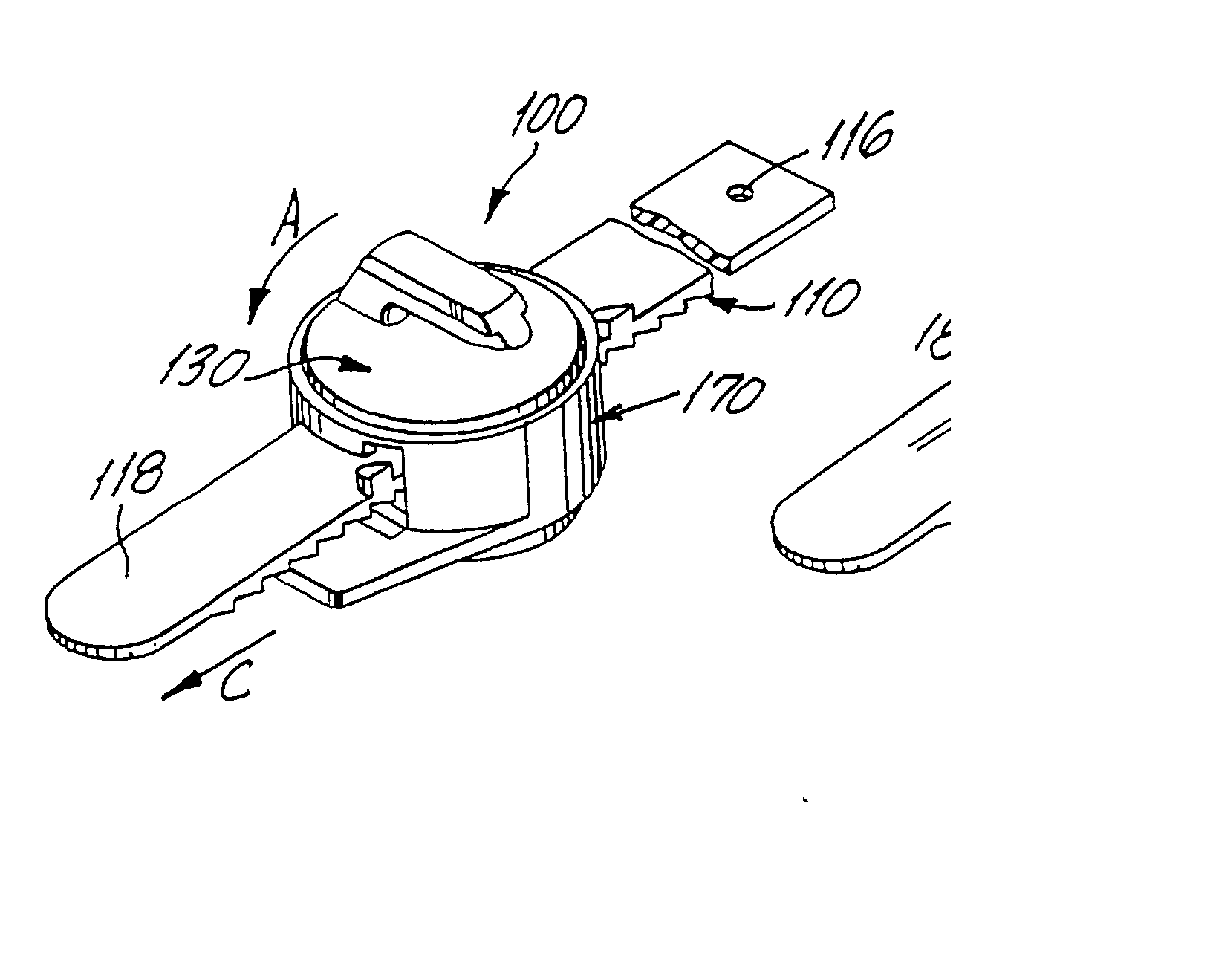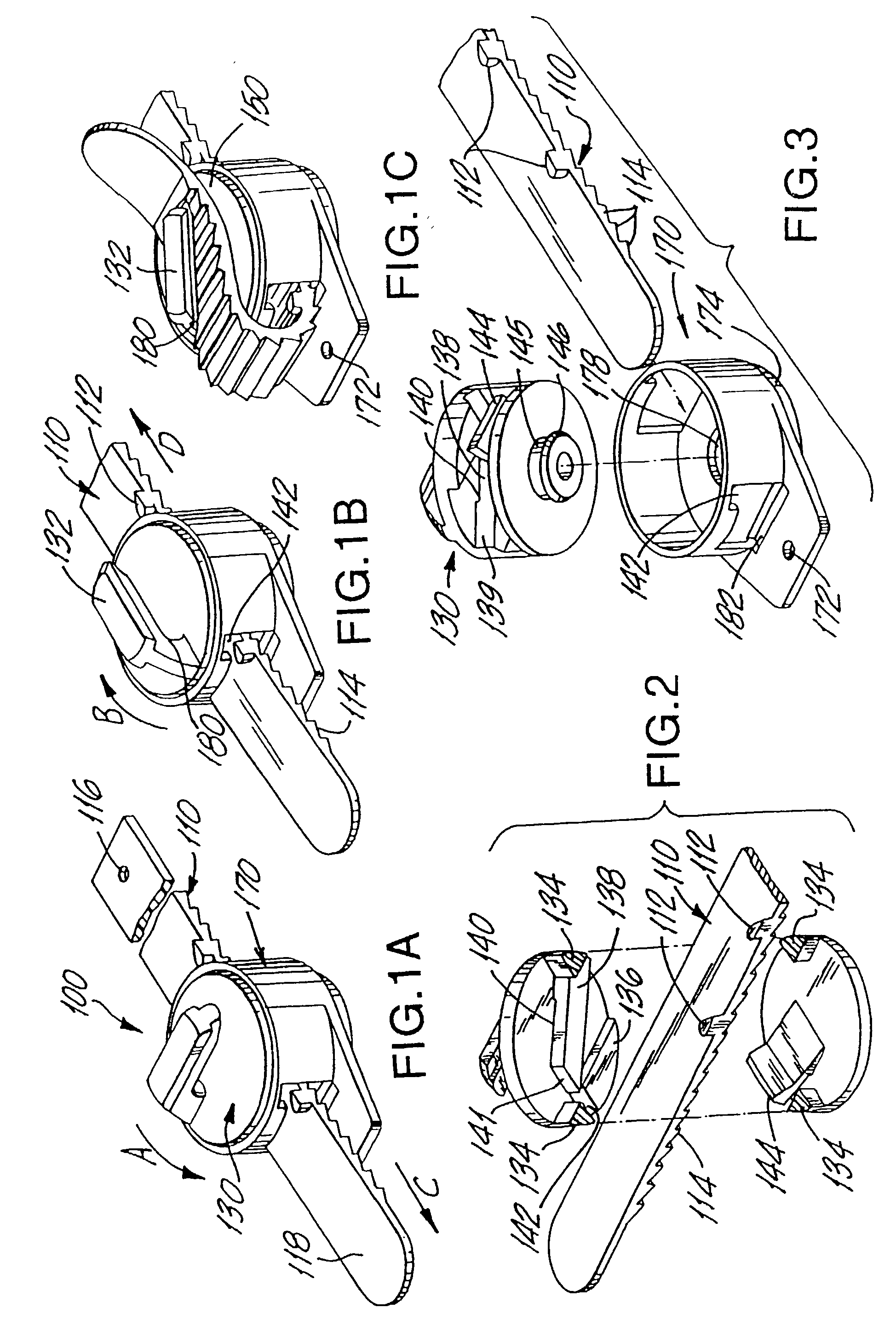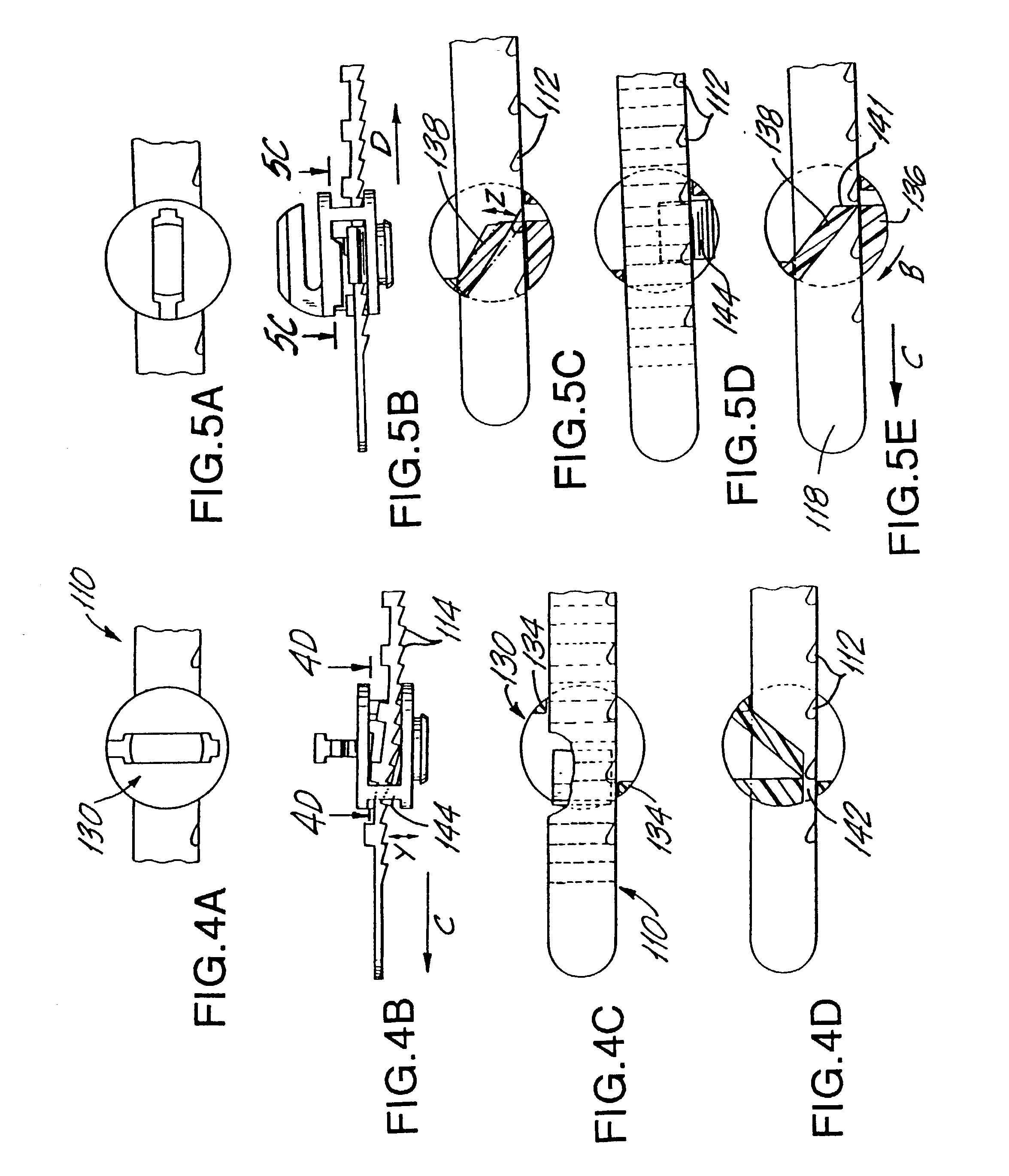Closure
a technology of closures and velcro, which is applied in the field of closures, can solve the problems of easy wear and tear of closures, knots and bows are difficult to tie or untie, and closures made of cords (such as laces, strings or ropes) tend to come undone,
- Summary
- Abstract
- Description
- Claims
- Application Information
AI Technical Summary
Problems solved by technology
Method used
Image
Examples
first embodiment
[0075] Referring now to FIGS. 1A-5E, the tie or closure 100 in accordance with the present invention is illustrated. Swivel tie closure 100 is comprised of three parts, a strap 110, a holder 130 and a retainer 170. Strap 110 has an end 116 that is attached (e.g., riveted, sewn, glued, hooked, snapped, etc.) to the item that is to be bound by the closure or to a lace that is to be attached to the bound item. A holder 130, having legs 134, engages with the strap 110 in one of two positions. A retainer 170 is attached at bore 172 to the other side of the item being bound. FIG. 1A shows the tie in the locked position.
[0076] If the user pulls the strap end 118 in the direction of arrow C, the tie will tighten by ratcheted increments. In this orientation, the tie is locked and cannot loosen. To unlock the tie 100, the user simply swivels the handle 132 of the holder 130 counter-clockwise, in the direction of arrow A, until it stops (approx. 1 / 4 turn). The user unlocks the tie in the conve...
second embodiment
[0085] the closure in the form of a slide tie 200, in accordance with the present invention is illustrated in FIGS. 6A-10B. Slide tie 200 is analogous to the swivel tie, however the movement required to move the holder from the locked position to the unlocked position (and visa versa) is a sliding movement rather than a swiveling movement. Slide tie 200 is comprised of three pieces, strap 210, a holder 230, and a retainer 270. Strap 210 has an end 216 that is fixedly attached (e.g., riveted, sewn, glued, hooked, snapped, etc.) to the item being bound or attached to a lace or string attached to the bound item.
[0086] Holder 230, has sides 234, and engages with strap 210 in one of two positions. Retainer 270 is preferably fixedly attached (snapped, glued, hooked, sewn, riveted, etc.) at bore 272 to the other side of the item being bound. FIG. 6A shows the tie in the locked position. If the user pulls the strap end 218 in the direction of arrow C, the tie will tighten by ratcheted incre...
PUM
 Login to View More
Login to View More Abstract
Description
Claims
Application Information
 Login to View More
Login to View More - R&D
- Intellectual Property
- Life Sciences
- Materials
- Tech Scout
- Unparalleled Data Quality
- Higher Quality Content
- 60% Fewer Hallucinations
Browse by: Latest US Patents, China's latest patents, Technical Efficacy Thesaurus, Application Domain, Technology Topic, Popular Technical Reports.
© 2025 PatSnap. All rights reserved.Legal|Privacy policy|Modern Slavery Act Transparency Statement|Sitemap|About US| Contact US: help@patsnap.com



